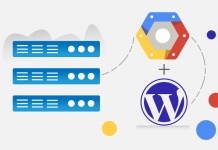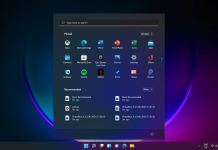How To Use AI To Reduce or Eliminate Downtime In IT Systems
Technology’s evolution can also be measured by decreasing customers’ patience when it comes to delays and Downtime. They expect 100% service uptime and no interruptions. While most businesses are worried about competitors, they should first look at their systems to prevent any internal failure, which could do considerable damage. Customer loyalty is no longer guaranteed; it is a matter of keeping your promise and overdelivering.
An older study from 2019 showed that an hour of Downtime in IT for large enterprises could cost way north of $100.000 depending on the organization’s size or the moment of the outage, such as Black Friday sales. These numbers can go up to millions without even counting penalties, non-compliance, and legal actions. We can only expect these numbers to rise with time.
The threat of outages is combined with an overwhelming number of alerts, complex processes, and an ever-increasing number of internal and external integrations. All these moving parts are prone to failure and could result in costs.
All best solutions to IT downtime involve the AI-powered process automation platforms, an umbrella term that designates a platform powered by machine learning which automates operational tasks in an IT system. This deals with identifying, diagnosing, and solving issues. The best can also work in a preventive manner, identifying potential threats before turning into outage-causing problems.
Calculating the Downtime Cost for IT
To evaluate the impact of Downtime on IT operations, we need an estimate. A possible formula is:
Cost of Downtime = Lost Revenue + Lost Productivity + Recovery Costs + Intangible Costs
Lost Revenue
Even if a company operates on a per-project basis, it can still compute the average revenue it generates every hour. Any downtime, even a few minutes long, can harm the baseline. Performance monitoring always aims to show the uptime of a system and trigger alerts when something is wrong.
Lost Productivity
Although it can be converted into lost revenue, lost productivity is essential on its own because it can generate revolving lost revenue and reputation repercussions, delaying operations and delivery. This metric is related to the salary of the employees affected by the downtime since they are paid regardless of the system’s operational status.
Recovery Costs
If a server failure caused the downtime, this comes with various costs. This is the part that is the most difficult to estimate because it can be as simple as rebooting the server, or it could require updates, malware removal, or even hardware replacements. It also includes the cost of temporary support solutions to keep business going, at least at a lower level.
Intangible Costs
A company’s reputation adds to its revenue, and a negative reputation can have considerable costs, especially in business loss. Clients are always looking for the most reliable solution, and interruptions cause frustration.
Can Downtime be predicted?
The good news is, yes, using AI. Artificial Intelligence can learn patterns predicting system failure and trigger alerts before it happens or even take corrective measures, preventing the outage altogether.
A few scenarios are prone to cause downtime in an IT system, and an AI-powered platform can help with each of them.
Increased traffic
Some outages are due to system overload during peak times. While it makes no sense to have more resources on average, for these moments, an AI system connected to monitoring tools can see the higher demands and dynamically re-allocate server and network resources to serve the clients. This helps NOC teams monitor uptime without worrying about losing clients. The AI platform can perform event correlation and allocate more resources, if necessary, for a specific period.
Rebooting or power outage
The most common cause of outages, rebooting the server, takes a few moments to get all the systems going, and it can process requests. During these moments, the users get a message that the services are unavailable, which can be frustrating or lead to business loss.
One of the ground rules in networking is information redundancy. If the AI platform detects that a server is temporarily unavailable, it can switch to another server that contains the same information.
Preventing security issues
The most serious concern regarding downtime is related to cyberattacks. SOC teams strive to detect, analyze, and hedge security incidents. There is a continuous flow of alerts, some of which are harmless. Others can pose a severe threat. In most centers, the alert noise can be distracting.
An AI-powered process automation platform can help with the security alert triage and alert noise reduction. The best systems, like Siscale’s Arcanna.ai triage alert platform, are not meant to eliminate entirely the need for human interaction – since only the combination of the two – human and machine can bring reliable solutions.
Such systems use the AI core to reduce the alert noise, analyze and correlate the remaining alerts, and employ the human for making the proper decision. This helps operations teams overview all the organization’s signals and take a decision related to immediate threats.
Using data science, the AI solutions look for activity patterns associated with known threats and scans the real danger alerts.
Minimizing Downtime Cost
Although it is almost impossible to have 100% uptime, that is the goal towards which companies strive. Realistically, they should focus on minimizing downtime and the cost of it. There are a few ways to do this, considering the previous discussions.
- Always have a backup plan ready in case of downtime and a recovery plan on the way.
- Perform continuous analysis of all parameters using AI systems powered by big data. The current amount of data flows and alerts greatly exceeds the human processing capacity. If you had a critical incident, don’t move on before identifying the root cause and taking corrective measures to prevent a replica.
- Always strive for prevention instead of fixing. Such platforms can identify potential problems before these turn into damaging situations. Most attacks, outages, or errors have a pattern that predicts them. An AI system can detect deviations from business as usual and start identifying the cause and solutions.
One very important advantage of adopting an AI-powered solution resides not in removing humans from the IT systems, but from freeing up the highly skilled employees such as security and network engineers and replacing the repetitive and tedious part of their job with strategic thinking.
Join Telegram Group of Daily Jobs Updates for 2010-2023 Batch: Click Here
If You Want To Get More Daily Such Jobs Updates, Career Advice Then Join the Telegram Group From Above Link Also Press Red Bell Icon At The Left Side of Page To Subscribe our Updates.
TCS NQT 2021 Registration has been Started For Across India: Click here
Accenture Hiring Freshers of Package 4.5 LPA Across India: Click here
Why You’re Not Getting Response From Recruiter?: Click here
Top 5 High Salary Jobs in India IT Sector 2021: Click here
Whats is the Difference Between a CV and a Resume?: Click here
How To Get a Job Easily: Professional Advice For Job Seekers: Click here
A Leadership Guide For How To Win Hearts and Minds: Click here
How To Improve Communication Skills with 12 Strategy: Click here
Career Tips for Freshers: Top 7 Hacks To Land Your Target Job: Click here
Which Graphics Processor is Best for Gaming 2021?: Click here
Feel Like Demotivated? Check Out our Motivation For You: Click here
Top 5 Best Mobile Tracking App in 2021 For Mobile & PC: Click here
5 Proven Tips For How To Look Beautiful and Attractive: Click here
Home Workouts During The Lockdown For Fitness Freaks: Click here
What is Big Data Analytics? Does it Require Coding?: Click here










































